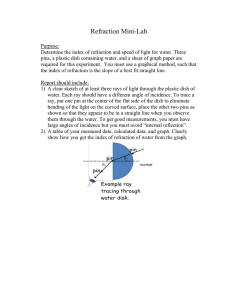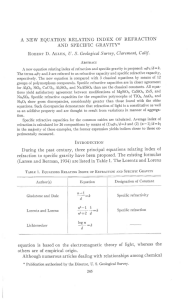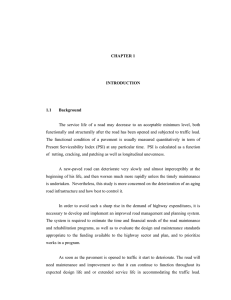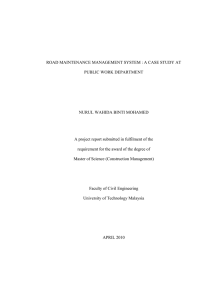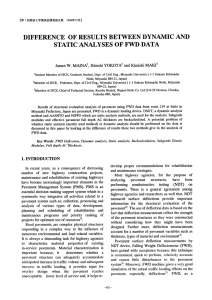Modelling Atmospheric Refraction Journal Activity
advertisement
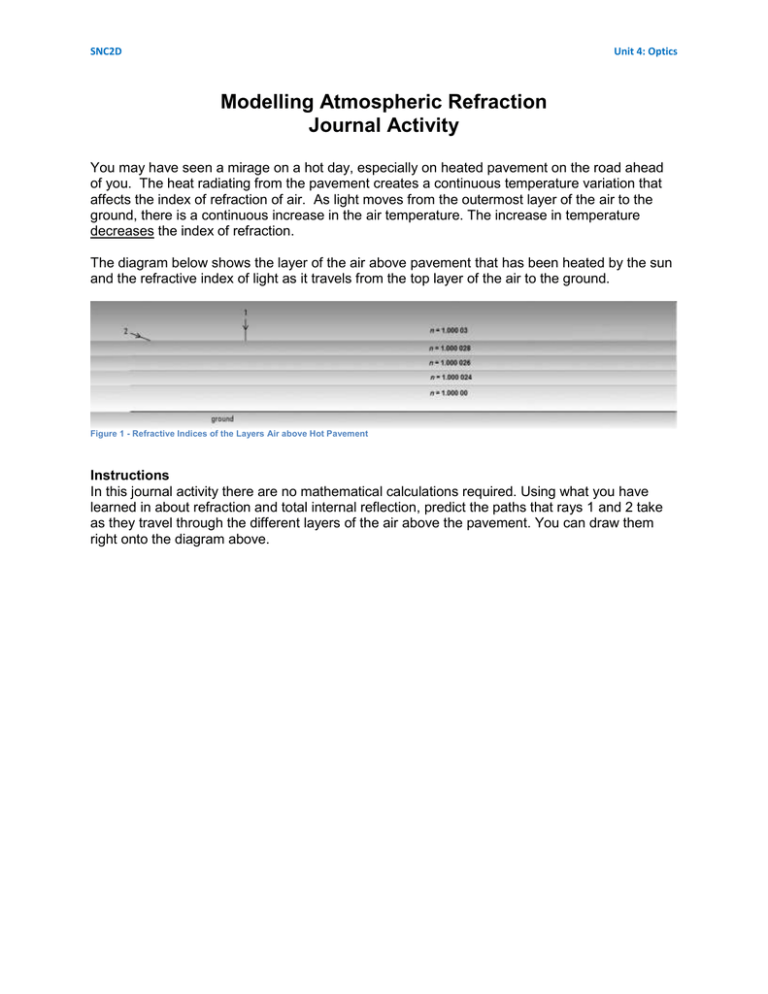
SNC2D Unit 4: Optics Modelling Atmospheric Refraction Journal Activity You may have seen a mirage on a hot day, especially on heated pavement on the road ahead of you. The heat radiating from the pavement creates a continuous temperature variation that affects the index of refraction of air. As light moves from the outermost layer of the air to the ground, there is a continuous increase in the air temperature. The increase in temperature decreases the index of refraction. The diagram below shows the layer of the air above pavement that has been heated by the sun and the refractive index of light as it travels from the top layer of the air to the ground. Figure 1 - Refractive Indices of the Layers Air above Hot Pavement Instructions In this journal activity there are no mathematical calculations required. Using what you have learned in about refraction and total internal reflection, predict the paths that rays 1 and 2 take as they travel through the different layers of the air above the pavement. You can draw them right onto the diagram above. SNC2D Unit 4: Optics Using the diagram below and your knowledge of refraction and its effects, explain whether you agree or disagree with following statement: The observer sees the Sun’s light which appears to be coming from a point that is higher in the sky than it actually is. Your response must be in full sentences. (Hint: Trace the refracted rays back.) Figure 2 - Apparent Setting of the Sun



